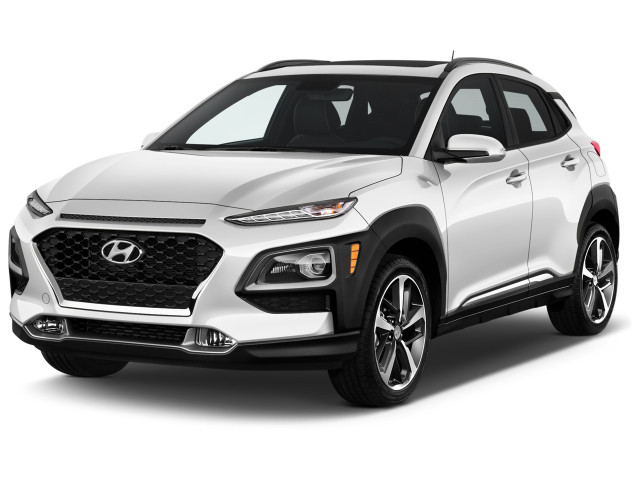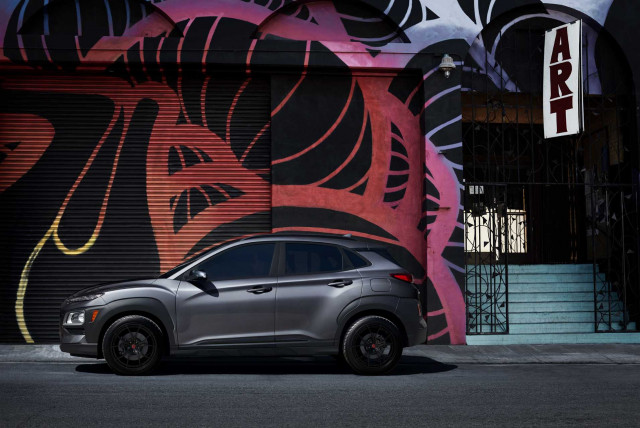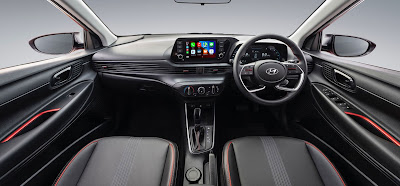Hyundai Owners
Wednesday, 26 January 2022
Hyundai i20 Makes A Sweet Family Car
Thursday, 30 December 2021
Hyundai Venue Budget SUV Engine Info
South Africa’s affordable SUV segment has literally exploded in the past year, with new entrants like the Suzuki Vitara Brezza and its Toyota Urban Cruiser twin hitting local shores along with the Kia Sonet, Nissan Magnite and Renault Kiger.


Hyundai has expanded its Venue compact SUV range with a new base model called the 1.2 Motion.
Priced at R259 900, the Hyundai Venue 1.2 Motion costs R58 000 less than the 1.0T Motion which was previously the most affordable entry into the range.

But whereas the latter comes with an 88kW 1.0-litre turbo petrol engine, those buying the 1.2 Motion will have to make do with a normally aspirated 1.2-litre petrol engine that produces just 61kW and 114Nm. It is paired with a five-speed manual transmission.
It remains to be seen whether the new 1.2 will offer adequate performance at altitude, and it’s also worth noting that its rivals come with larger 1.5-litre or turbocharged 1.0-litre engines.
The Hyundai Venue 1.2 Motion does however cover all the bases spec-wise, with standard amenities including an 8.0-inch infotainment system with Apple CarPlay and Android Auto connectivity and a reverse camera. It also comes with a multi-function steering wheel, electric windows and mirrors, manual air conditioning, dual front airbags and ABS brakes.
Also included in the R259 900 price is a seven-year or 200 000km warranty, three-year/45 000km service plan and roadside assistance for seven years or 150 000km.
.
.
Original article from https://www.iol.co.za/motoring/
Monday, 1 November 2021
The Hyundai Elantra We Want
Hyundai unveiled the seventh-generation Elantra sedan abroad, while the Elantra in South Africa has been discontinued.
Saturday, 28 August 2021
All-Around 2021 Hyundai Kona Review
The 2021 Hyundai Kona wears like statement jewellery and drives like a bargain.

It’s a small crossover SUV with economy-car roots, but the 2021 Kona has fancy hardware, from all-wheel drive to a dual-clutch transmission to an all-electric companion—and it’s all wrapped in a shape that demands you notice it.
The Kona is a lot to look at. All the clever crossover-SUV styling tricks show up here, from floating-roof cues to highlighter highlights to stacked headlights. It’s better and more soothing inside, where a more routine layout of controls and a now-usual touchscreen interface take the wheel.
Selecting the right Kona for performance takes some hoop-jumping. Base cars get a middling 147-horsepower inline-4 and a smooth-shifting 6-speed automatic; we’d take the latter with the optional and way more perky 175-hp turbo-4 instead of the shifty 7-speed dual-clutch that’s supplied.The Kona drives better with available all-wheel drive, which comes with an independent rear suspension that makes the most of its short wheelbase. It’s perky, entertaining on back roads, and easy to needle through city streets.
Four or five people can fit in the Kona, but the second-row seat’s snug for large adults even if only two come along for the ride. Flip down the back seat and the Kona can hold 1296,9-litres of cargo.
Every Kona comes with automatic emergency braking, and the IIHS and the NHTSA give the crossover sterling crash-test scores. Base cars have a 7.0-inch touchscreen with Apple CarPlay and Android Auto compatibility; our sweet spot is the Kona SEL, which gets keyless start, 17-inch wheels, heated front seats, satellite radio, and blind-spot monitors. The Kona’s killer app? A 5-year/100,000km warranty..
Styling
It’s a party on the outside, business inside the Kona.
Have you seen a crossover-SUV styling cue you like? Chances are it’s in place on the 2021 Hyundai Kona, a busy-looking crossover that wears a lot of flash in its quest for attention. It’s less complicated inside, for which we give thanks—but we still give a 4 overall for the look.
The cabin reads differently, like a familiar book. The controls are laid out in a logical way, with pods of controls and vents framed in a lot of black and grey. The Kona’s central touchscreen lightens up the mood—we’re still waiting for a crackling-fireplace wallpaper for the screen. It’s not quite sober, but not nearly so radical as the body; the Kona interior seems almost to belong to a different car altogether.
Performance
The Kona handles well, but its powertrains need more refinement.
The petrol-powered Hyundai Kona can handle winding roads, but its engines and transmissions lag.
Base Kona crossovers adopt a 2.0-litre inline-4 that churns out 109kW. It’s teamed with a 6-speed automatic that sends power to the front wheels. If that sounds like an economy car, it is—and the Kona seems sluggish in this configuration. All-wheel drive helps with traction in wet weather, but it adds weight and cost too, so we’d avoid it in this configuration.
In handling the Kona fares much better. The independent suspension on all-wheel-drive versions delivers deft handling (front-drive models have a twist-beam rear that’s a little less planted) and good ride comfort for a car that rides on a short wheelbase. Steering feel builds heft when the Kona’s drive modes flip into Sport, and the ride degrades a bit when the larger 18-inch wheels are fitted, so finding the best Kona performance is a needle-threading exercise. With all-wheel drive, the Kona has 6.7 inches of ground clearance, so visions of Moab would be better replaced by visions of a close-in parking spot at the mall on a rainy weekend morning.
The best way to know if the Kona’s handling is suited to your driving style and needs is to book a test drive at Group 1 Hyundai.
Comfort & Quality
The Kona’s smaller than a Tucson—and not much bigger than a Venue.
Hyundai slots the Kona crossover between its Tucson and Venue utility vehicles, but it’s closer in size to the value-packed Venue—and that makes it more suitable for two adults and occasional passengers rather than four people on long hauls.
We think it’s a 6 for comfort, thanks to its spacious cargo hold.
The Kona’s front seats have good bolstering and range of adjustment; they sit relatively high, which sells this crossover SUV to people who might think a Kia Soul is too low. The cloth seats can be upgraded to leather in the top trim.

While the seats themselves are fine, the Kona’s cabin is snug, and rear seats are limited in shoulder and knee room for adults. Headroom works better, thanks to the Kona’s bubble-roof design.
The rear seats fold down to boost the Kona’s cargo space from 544-litres to 1297=litres. Better than some lower-riding hatchbacks, the Kona has a wide hatch and a low load floor, which makes for an easier cargo loading experience.
The Kona interior comes in grey or black.
Safety
The Kona comes standard with great crash-test scores.
Crash-test scores put the Kona near the top of its small-SUV niche.
The NHTSA pegs the Kona at five stars overall, with a sole four-star score for rollover risk. The IIHS gives it “Good” scores in all its crash tests and a Top Safety Pick award.
All Hyundai Kona crossovers come with automatic emergency braking. Blind-spot monitors become available on the SEL, while Ultimate Konas get a head-up display, adaptive cruise control, and active lane control.
KONA Base Model Features
Hyundai fits all Kona crossovers with lots of features and covers them with the same great warranty, but the SEL offers the best value.
Base Kona SE crossovers have power features, cloth upholstery, 16-inch wheels, a 7.0-inch touchscreen with Apple CarPlay and Android Auto, Bluetooth, and automatic emergency braking.
Hyundai’s 5-year/100,000 km bumper-to-bumper warranty covers the Kona, and it expands to 10 years/160,000 km for the powertrain. Hyundai also includes three years of free maintenance on all its 2021 models.

Article source: https://hyundaidrivers.wordpress.com/2021/08/28/all-around-2021-hyundai-kona-review/
Friday, 25 June 2021
The New Hyundai i20 Lifts The Spirit
Before the Hyundai i20 there was the Hyundai Getz. And I seem to remember that most times I had to hire a car while on holidays in those days, the Getz was the rental industry’s small car of choice. There was a good reason — it was simple, reliable, and pretty tough. For me, as their customer, it never let me down.
This last week I was driving the third generation of the Getz’s successor. And I felt the same way about it. Tidy in size but with enough capacity, reliable because the powertrains are derivative of engine tech that is tried and proven, and I found it to be pretty tough on some of the more marginal roads at the edges of my home area.
Through its three iterations since 2009, the i20’s looks have been evolving. This latest is very attractive in its class, and Hyundai has a name for the theme — Sensuous Sportiness. I see what they’re getting at … though the performance is pretty ordinary, the car looks the sporty part.
A sculpted wedge, the waistline dropping forward from a stylistically intricate rear treatment. A front with an edge to its grille styling. The ‘eyes’ lights have a purposeful gaze. I got comments whenever I drove up in the car. All good. Those 16” alloys probably helped. And the contrasting black roof.
It’s all new inside too, and smartly done. The horizontal ridged detailing along the dashboard adds a sense of width. A fresh treatment of the main instruments in a mix of white and Hyundai’s trademark blue theme are a very good modern take on traditional. The centre screen has big real buttons on either side. (There’s noting more frustrating than trying to tap small virtual buttons while driving. Yeah, yeah, you heard me before. You’ll continue to do so.)
The linkage to your smartphone of choice is now totally wireless, with no need to hook a charging lead up for using the Apple or Android systems. This is progress: such leads generally loop around stuff and are untidy.
The i20 has always offered decent travelling for four people The inside space is much the same as the previous car, and that’s enough. Even for me, getting in and out of the back was easy, and my remaining hair stayed clear of the roof. I also had ample knee room behind someone of my own size upfront. This is a small car that doesn’t stint on space.
The engine is the familiar 1.2 inline-four which has been a staple of the petrol option through the Hyundai i20s generations. Gaining a little in power along the way. I suggested already that the car doesn’t do blistering performance, but the 84hp is adequate and matches nicely most use this car will have. The 5-speed manual is a masterclass in good feel and operation.
This car comes with a solid suite of driver-assist programmes as standard, including Lane Keeping Assist and one that reminds you when the car stopped in front moves away. I turn most of them off. Too many beeps and nudges, for those of us who find this annoying it’s an issue right across the industry.
For obvious reasons I’m not doing the long runs these days, but I do have a quite testing circuit of varying roads in my own county, and it was on some of these where I felt the latest i20 at Group 1 Hyundai will likely live long on even the most neglected of road surfaces. Quite impressively strong and capable, actually.
It’s partly the state of the market, partly where the car’s segment sits, but Hyundai in Ireland is offering just two grades, and two engines … the one driving mine and a 1.0 three-pot with automatic transmission.
All in all, my week with the car was a very satisfying experience. I’d be very happy renting one whenever we get to leave this island for the holidays again.
.
Article sourced from https://www.southernstar.ie/
Saturday, 15 May 2021
Hybrid engines and bold looks aim to propel the Hyundai i30 to centre stage in the family car market abroad.
2020 Hyundai i30 on the road
2020 Hyundai i30 interior
Friday, 19 March 2021
Hyundai Really Wants to Build Their Weird Walking Cars
We’ve seen many great Hyundai specials over the years, but THIS Hyundai is really special…
Hyundai announced the formation of its new New Horizons Studio on Monday dedicated to hyper-capable "Ultimate Mobility Vehicles." These vehicles combine wheeled travel and robotics to travel over even the harshest off-road terrain. So far, the concepts also look like giant human-carrying Boston Dynamics dogs.
It's the stuff of science fiction, and Hyundai Vice President Dr. John Suh, who's leading the New Horizons Studio, knows it.
“We aim to create the world’s first transformer-class vehicle, also known as the Ultimate Mobility Vehicle,” notes Dr. Suh.
TRANSFORMER-CLASS. Will this fold back down into an i20 WRC? Should I be looking to Hyundai instead to finally deliver on that life-size Gundam I've always dreamed of? Why am I asking you these things instead of Hyundai?
They're not to giant laser-shooting battle suits just yet, sadly. New Horizons Studio's first project is to further develop the Hyundai Elevate concept from the 2019 Consumer Electronics Show. The Elevate has wheels on its four legs, meaning that it can pick up those legs to get to otherwise unreachable locations.
Hyundai believes that the Elevate could be useful as a first responder vehicle in natural disasters, or as a vehicle that can pick up wheelchair users who may not be able to travel down a ramp to get into a car. Back the Elevate directly up to the door, and let them skip the stairs.
While the Elevate will most likely not be a consumer vehicle - you can still get a great special on a Hyundai car at Group 1 Hyundai.
.
.
Original article from https://www.thedrive.com/news/



















